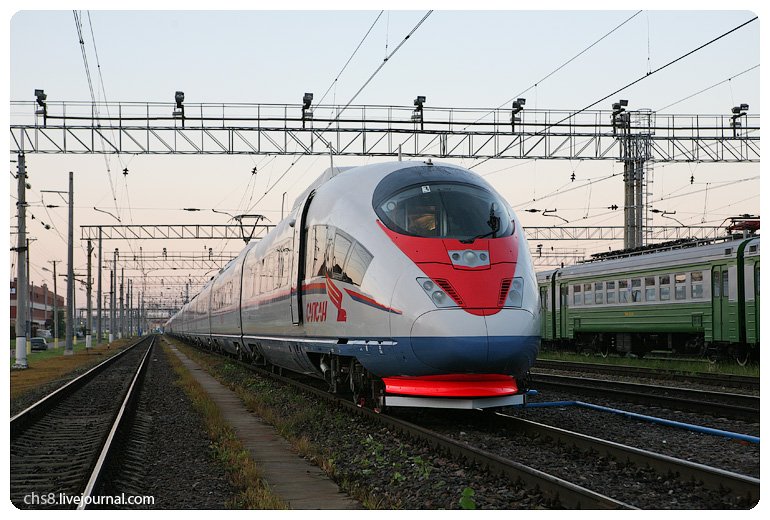|
|
Siemens Velaro RUS Sapsan, Moscow, St. Petersburg
|
Demographics
Saint Petersburg is the second largest city in Russia. Per the preliminary results of the 2010 Census, the city's population is 4,848,700, or 3.39% of the total population of Russia; up from 4,661,219 (3.21%) recorded in the 2002 census. The 2002 census recorded twenty-two ethnic groups of more than two thousand persons each. The ethnic composition was: Russian 84.72%, Ukrainian 1.87%, Belarusians 1.17%, Jewish 0.78%, Tatar 0.76%, Armenian 0.41%, Azeri 0.36%, Georgian 0.22%, Chuvash 0.13%, Polish 0.10%, and many other smaller ethnic groups, while 7.89% of the inhabitants declined to state their ethnicity.
The 20th century saw hectic ups and downs in population. From 2.4 million in 1916 it had dropped to less than 740,000 by 1920 during the Russian Revolution of 1917 and Russian Civil War. The minorities of Germans, Poles, Finns, Estonians and Latvians were almost completely transferred from Leningrad during the 1930s. From 1941 to the end of 1943, population dropped from 3 million to less than 600,000, as people died in battles, starved to death during the Siege of Leningrad, or were evacuated. After the siege, some of the evacuees returned, but most influx was due to migration from other parts of the Soviet Union. The city absorbed about 3 million people in the 1950s and grew to over 5 million in the 1980s. From 1991 to 2006 the city's population decreased to the current 4.6 million, while the suburban population increased due to privatization of land and massive move to suburbs. Based on the 2010 census results the current population is over 4.8 million. The birth rate remains lower than the death rate; people over 65 constitute more than twenty percent of the population; and the median age is about 40 years.
People in urban Saint Petersburg live mostly in apartments. Between 1918 and the 1990s, the Soviets nationalised housing and forced residents to share communal apartments (kommunalkas). With 68% living in shared flats in the 1930s, Leningrad was the city in the USSR with the largest number of kommunalkas. Resettling residents of kommunalkas is now on the way out, albeit shared apartments are still not uncommon. As new boroughs were built on the outskirts in the 1950s–1980s, over half a million low income families eventually received free apartments, and about an additional hundred thousand condos were purchased. While economic and social activity is concentrated in the historic city centre, the richest part of Saint Petersburg, most people live in commuter areas. For the first half of 2007, the birth rate was 9.1 per 1000.
|
|









